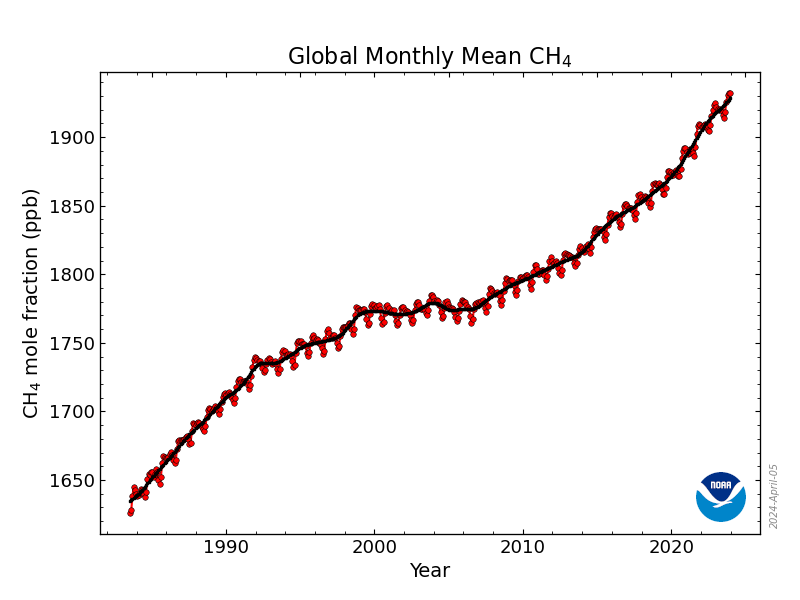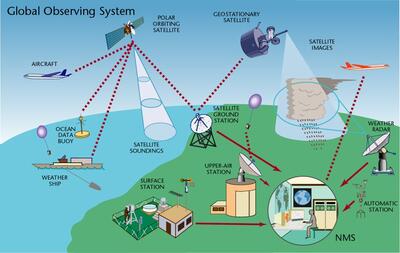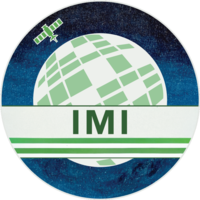
Last Updated: December 27, 2023
Our research focuses on better understanding the chemical composition of the atmosphere, its perturbation by human activity, and the implications for life on Earth. We use advanced models of atmospheric chemistry to interpret observations from satellites, aircraft, ground networks, and other platforms. We view our models as part of an integrated observing system to increase fundamental knowledge of atmospheric chemistry and address pressing environmental issues.
We have a large number of ongoing projects at any given time, organizaed by sub-groups :
- Air Quality & Chemistry - Leaders: Ruijun Dang, Xu Feng, Yujin Oak
- Climate & Health - Leader: Loretta Mickley
- Methane - Leaders: Zichong Chen, Daniel Varon
- Model Development and Software Tools - Leaders: Lizzie Lundgren, Melissa Sulprizio, Bob Yantosca
- Retrieving Point Sources from Satellites - Leader: Daniel Varon
- Statistical Learning in Atmospheric Chemistry (SLAC) - Leaders: Daniel Varon, Drew Pendergrass
- Diversity, Inclusion, and Belonging - Leaders: Nadia Colombi and Drew Pendergrass


 China and Korea have a very severe particulate matter (PM) and ozone air pollution problem. Surface air quality networks together with satellite and aircraft allow us to track changes in air quality and the responses to emission controls, to better understand the chemical processes controlling PM and ozone formation, and to guide future emission control strategies.
China and Korea have a very severe particulate matter (PM) and ozone air pollution problem. Surface air quality networks together with satellite and aircraft allow us to track changes in air quality and the responses to emission controls, to better understand the chemical processes controlling PM and ozone formation, and to guide future emission control strategies.
 Tropospheric ozone is a central species for atmospheric chemistry. It affects air quality, it is a major greenhouse gas, and it controls the oxidizing power of the atmosphere. Ozone is produced by photochemical oxidation of CO and volatile organic compounds (VOCs) in the presence of NOx, and is also transported from the stratosphere. It is lost by deposition and by photochemical processes including halogen chemistry. The chemistry interacts with transport on all scales, making for a very complicated problem that current models still struggle with. Tropospheric ozone is presently rising but we dont understand why.
Tropospheric ozone is a central species for atmospheric chemistry. It affects air quality, it is a major greenhouse gas, and it controls the oxidizing power of the atmosphere. Ozone is produced by photochemical oxidation of CO and volatile organic compounds (VOCs) in the presence of NOx, and is also transported from the stratosphere. It is lost by deposition and by photochemical processes including halogen chemistry. The chemistry interacts with transport on all scales, making for a very complicated problem that current models still struggle with. Tropospheric ozone is presently rising but we dont understand why.
 The atmospheric chemistry of volatile organic compounds (VOCs) has major implications for oxidant concentrations and for formation of secondary organic aerosol (SOA). VOCs are emitted from many different sources. They undergo various oxidation cascades in the atmosphere, producing increasingly substituted and cleaved species. These species may condense to form SOA and subsequently react in the aerosol phase. Most of the species and reactions involved have never been measured and must be inferred indirectly. Comparisons of model and observations can show order-of-magnitude differences. This is one of the big frontiers of knowledge in atmospheric chemistry.
The atmospheric chemistry of volatile organic compounds (VOCs) has major implications for oxidant concentrations and for formation of secondary organic aerosol (SOA). VOCs are emitted from many different sources. They undergo various oxidation cascades in the atmosphere, producing increasingly substituted and cleaved species. These species may condense to form SOA and subsequently react in the aerosol phase. Most of the species and reactions involved have never been measured and must be inferred indirectly. Comparisons of model and observations can show order-of-magnitude differences. This is one of the big frontiers of knowledge in atmospheric chemistry.
 Background
Background
 Background
Background
 Anthropogenic emissions of methane originate from a very large number of individually small point sources including coal mine vents, oil/gas production and processing facilities, stockyards, landfills, etc. These sources have highly variable emissions, and can spike under abnormal conditions. Satellites provide a unique vantage point for detecting the atmospheric plumes originating from large point sources and thus enable action to shut down these emissions.
Anthropogenic emissions of methane originate from a very large number of individually small point sources including coal mine vents, oil/gas production and processing facilities, stockyards, landfills, etc. These sources have highly variable emissions, and can spike under abnormal conditions. Satellites provide a unique vantage point for detecting the atmospheric plumes originating from large point sources and thus enable action to shut down these emissions.
 Methane is the second most important anthropogenic greenhouse gas after CO2. It is particularly important for near-term (~20 years) climate change. Methane is emitted by a wide range of processes including oil/gas systems, livestock, landfills, wastewater, rice cultivation, and wetlands. The magnitudes of these sources, their spatial distributions, and their temporal trends are poorly understood. Improving the "bottom-up" inventories that relate emissions to activity levels is imperative for climate policy. This can be done by using new activity and emission factor data, evaluating the resulting inventories with atmospheric observations through "top-down"inverse analyses, and using the results of these inverse analyses to further improve the emission inventories. This partnership between bottom-up and top-down approaches is key to improving understanding of methane emissions in a way that can enable policy action. It requires bottom-up inventories with high spatial resolution that can serve as prior estimates in inversions of atmospheric observations.
Methane is the second most important anthropogenic greenhouse gas after CO2. It is particularly important for near-term (~20 years) climate change. Methane is emitted by a wide range of processes including oil/gas systems, livestock, landfills, wastewater, rice cultivation, and wetlands. The magnitudes of these sources, their spatial distributions, and their temporal trends are poorly understood. Improving the "bottom-up" inventories that relate emissions to activity levels is imperative for climate policy. This can be done by using new activity and emission factor data, evaluating the resulting inventories with atmospheric observations through "top-down"inverse analyses, and using the results of these inverse analyses to further improve the emission inventories. This partnership between bottom-up and top-down approaches is key to improving understanding of methane emissions in a way that can enable policy action. It requires bottom-up inventories with high spatial resolution that can serve as prior estimates in inversions of atmospheric observations.
 Background
Background
 ound
ound
 Background
Background

 Background
Background
 Background
Background